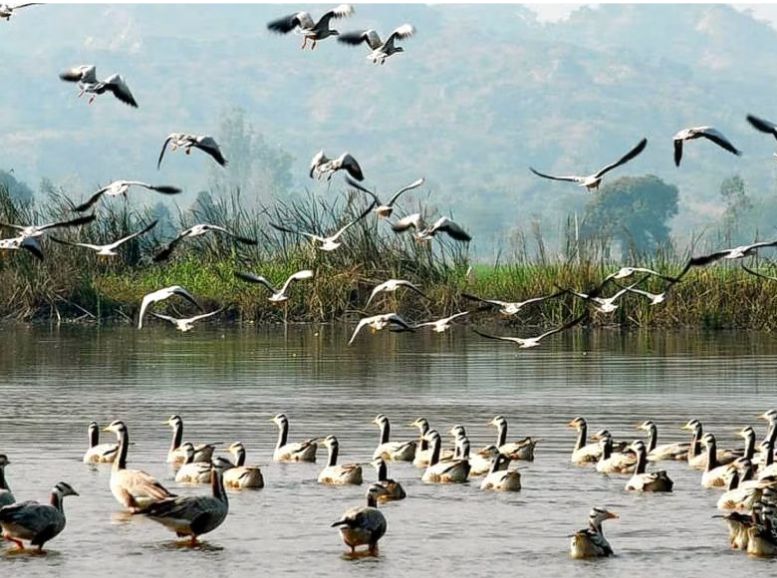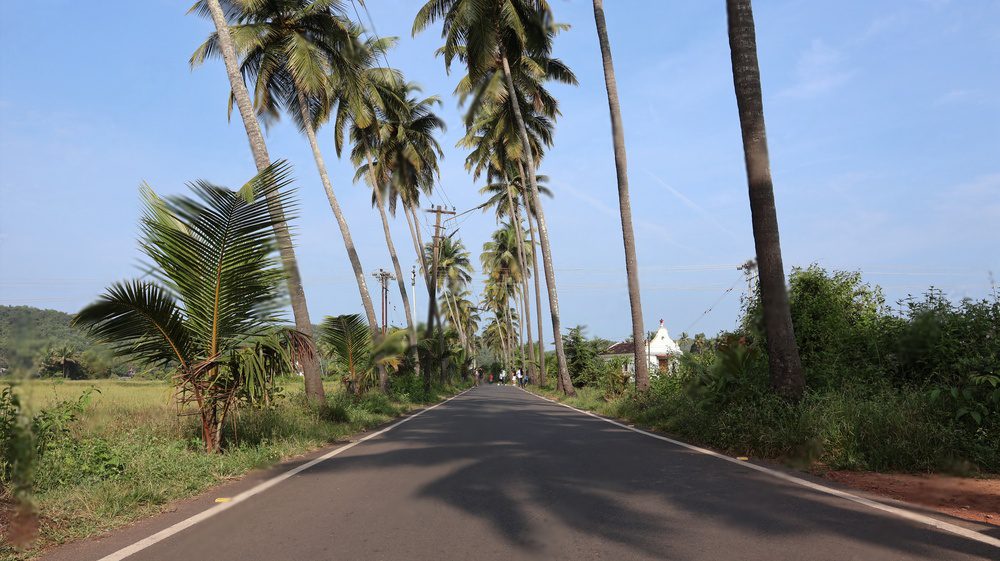The Harike Wetland and Bird Sanctuary, a verdant enclave nestled in Punjab’s Ferozepur district, beckons both nature enthusiasts and birdwatchers. This sprawling sanctuary encompasses a mosaic of wetlands, marshes, and riverine forests, creating a haven for biodiversity and tranquility.
As one of northern India’s largest wetlands, Harike provides a critical habitat for a multitude of resident and migratory birds. This abundance makes it a paradise for birdwatchers and photographers, offering unparalleled opportunities to witness nature’s avian wonders. However, the sanctuary’s ecological significance extends far beyond its feathered residents. It harbors a rich tapestry of flora and fauna, each species playing a vital role in maintaining the delicate balance of this unique ecosystem.
Throughout this blog, we will embark on a captivating exploration of the Harike Wetland and Bird Sanctuary. We’ll delve into its ecological importance, the diverse wildlife that calls it home, and the ongoing efforts to conserve this natural marvel. Join us as we unveil the beauty and serenity of this sanctuary, where each visit promises a deeper connection with the natural world and a renewed sense of awe.
How to reach:
By Road:
- From Ferozepur: The sanctuary is approximately 35 kilometers away from Ferozepur city. You can hire a taxi or use local bus services to reach the sanctuary.
- From Amritsar: If you’re traveling from Amritsar, the sanctuary is around 60 kilometers away. You can drive via NH54, which takes approximately 1.5 to 2 hours.
- From Ludhiana: Harike Wetland is about 150 kilometers from Ludhiana. The journey by road takes around 3 to 4 hours via NH5 and NH54.
By Train:
The nearest railway station to Harike Wetland is Ferozepur Cantt Railway Station. From there, you can hire a taxi or take a bus to reach the sanctuary, which is approximately 35 kilometers away.
By Air:
The nearest airport is Sri Guru Ram Dass Jee International Airport in Amritsar, which is around 75 kilometers from Harike Wetland. From the airport, you can hire a taxi or use other modes of local transportation to reach the sanctuary.
Local Transportation:
Once you reach Harike town, which is the nearest urban settlement to the sanctuary, you can find local transportation options like auto-rickshaws or cycle rickshaws to take you to the sanctuary entrance.
BEst time to visit:
(November to February):
Winter reigns supreme for bird enthusiasts. During this “peak season,” Harike transforms into a haven for migratory birds journeying from faraway lands like Siberia and Central Asia. The cool, dry weather offers perfect conditions for birdwatching. Cranes, ducks, geese, and waders flock to the sanctuary in the thousands, creating a breathtaking spectacle for visitors.
(September-October & March-April):
The periods following the monsoon and leading into summer can be equally rewarding. Witness a fascinating mix of resident and migratory birds during these transitional months. Lush greenery and vibrant landscapes paint a picturesque backdrop for your visit. Pleasant weather makes outdoor activities like birdwatching, nature walks, and photography even more enjoyable.
(May to June):
While summer might not be prime time for spotting migratory visitors, it presents a unique opportunity to explore the sanctuary’s rich ecosystem. Observe resident bird species alongside reptiles, amphibians, and small mammals. The warm weather allows you to explore the trails and waterways, but remember to stay hydrated and protected from the sun.
(July to August):
Monsoon season might not be ideal for birdwatching due to heavy rainfall and limited visibility. However, the landscape transforms into a verdant paradise, captivating those who enjoy the rejuvenating aura of monsoon showers. It’s crucial to check weather forecasts and road conditions before planning your visit during this time, as heavy rainfall can disrupt travel plans.
Attractions:
Birdwatching: Harike Wetland and Bird Sanctuary
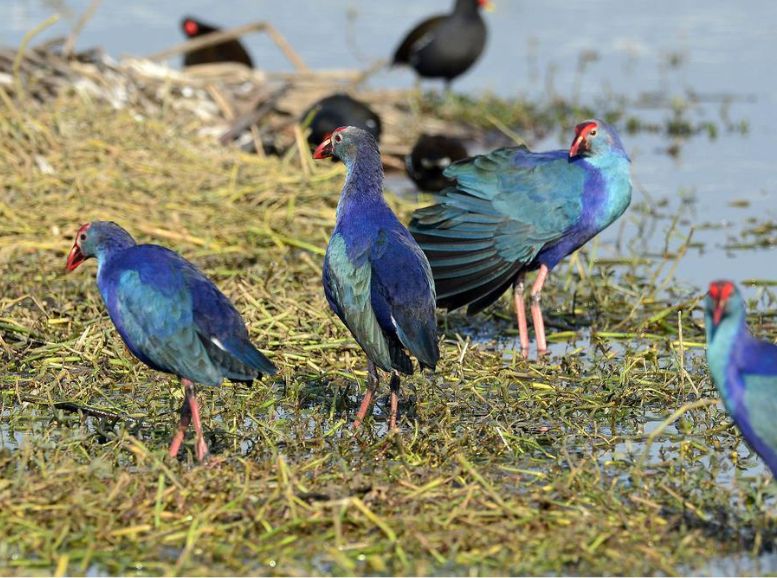

Harike Wetland and Bird Sanctuary boasts an incredible variety of birds, making it a haven for birdwatchers. This sanctuary provides critical habitat for both resident and migratory species. Prepare to be dazzled by iconic birds like bar-headed geese, northern pintails, and majestic sarus cranes. You’ll also find a diverse array of ducks, herons, and raptors to add to your birding list.
Boating and Wildlife Safari:
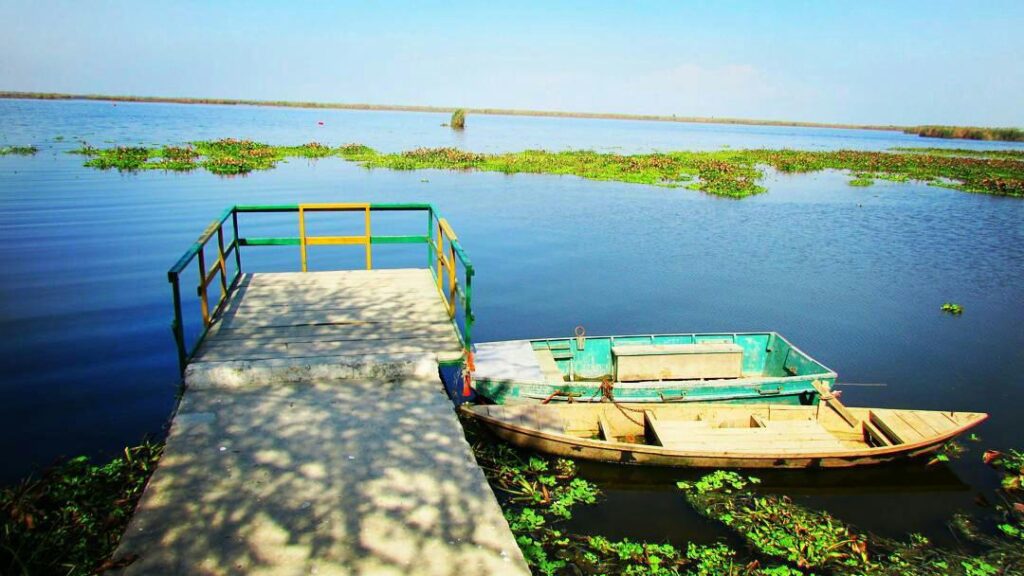

Glide through the tranquil waters of Harike Wetland and Bird Sanctuary Lake and its surrounding marshes on a peaceful boat ride. Guided tours offer a unique opportunity to observe birds, aquatic life, and the lush vegetation of the wetlands up close. Keep your camera handy to capture breathtaking views of the sanctuary’s scenic landscapes and diverse wildlife.
Picnic Areas and Recreation:
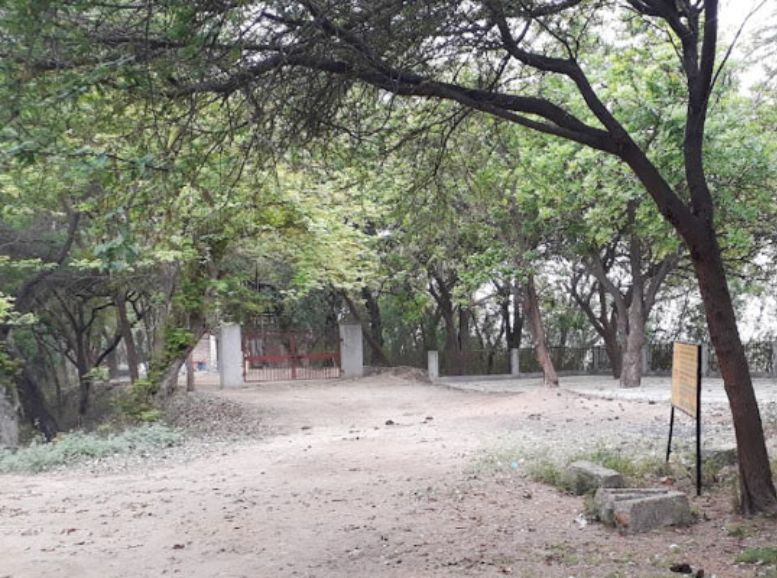

Unwind in nature’s embrace with a picnic at designated spots within the Harike Wetland and Bird Sanctuary. Imagine a relaxing day surrounded by the sights and sounds of the wetlands, sharing quality time with loved ones. For your comfort, some picnic areas may even offer shelters, benches, and restrooms.
Cultural and Historical Sites:
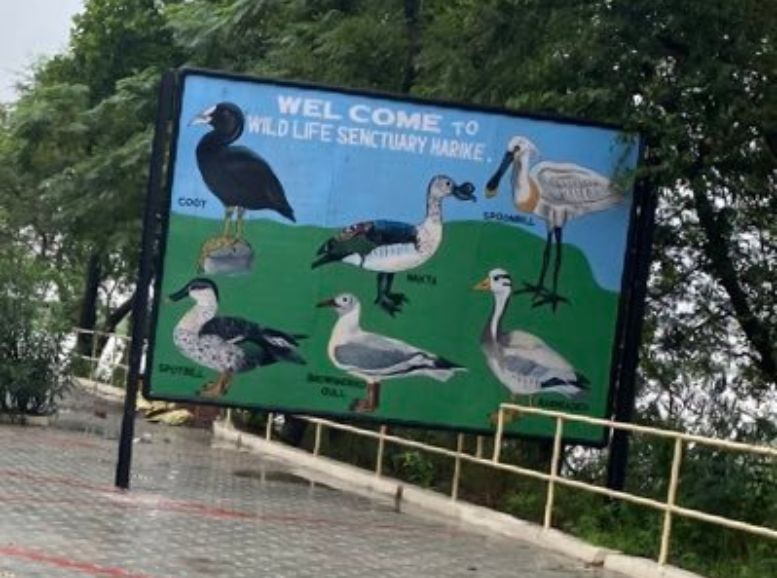

Complement your visit to Harike Wetland and Bird Sanctuary with a journey into the cultural and historical heart of Ferozepur. Explore nearby gems like Gurdwara Tarn Taran Sahib and Sarai Amanat Khan. These architectural wonders offer fascinating glimpses into the region’s rich heritage. For a truly immersive experience, delve into the local culture, savor the unique cuisine, and discover the vibrant traditions that make Ferozepur and its surroundings so special.
Local experiences:
Architectural Gems: Explore nearby gems like Gurdwara Tarn Taran Sahib and Sarai Amanat Khan . These architectural wonders offer fascinating glimpses into the region’s rich heritage.
Immerse in Local Culture: Savor the unique cuisine, and discover the vibrant traditions that make Ferozepur and its surroundings so special.
Discover Rural Charm: Embark on guided tours through nearby villages to discover the charm of rural Punjab. Engage with locals, learn about traditional farming practices, and immerse yourself in the vibrant culture of the region.
Spiritual Heritage: Explore the spiritual heritage of Punjab by visiting revered Gurdwaras such as Gurdwara Tarn Taran Sahib and Gurdwara Sri Darbar Sahib in Amritsar . Experience the community spirit through langar (community meal) and marvel at the architectural splendor of these sacred sites.
Genuine Punjabi Hospitality: Experience genuine Punjabi hospitality with rural homestays hosted by local families. Enjoy homemade Punjabi cuisine, participate in cultural activities, and forge meaningful connections with your hosts.
A Feast for the Senses: Indulge in the flavors of Punjab by sampling local delicacies at dhabas and traditional eateries. From sarson da saag with makki di roti (mustard greens curry with corn flatbread) to butter chicken, explore the diverse and mouthwatering cuisine of the region.
Support Local Artisans: Explore bustling markets in Ferozepur and Amritsar for authentic Punjabi handicrafts and souvenirs. Discover Phulkari embroidery, Punjabi juttis (footwear), and other exquisite handcrafted items .
VIBRANT Folk Arts: Immerse yourself in the vibrant cultural scene of Punjab with live performances of traditional folk music, dance, and theater. Experience the energy of Bhangra, Giddha, and other folk art forms at local festivals and events.
Sustainable Travel: Participate in eco-tourism initiatives focused on sustainability and conservation. Join tree planting drives, nature clean-up campaigns, and wildlife monitoring programs to contribute to the preservation of natural habitats and species.
Travel tips:
- Match Your Interests: Research the best time to visit based on your interests. Birdwatching thrives during winter migrations, while photography opportunities exist year-round. Consider factors like weather and bird patterns to optimize your experience.
- Essentials Checklist: Don’t forget sunscreen, insect repellent, binoculars, a camera, comfortable walking shoes, and clothes suited to the weather.
- Check Before You Go: Verify the sanctuary’s opening hours, entry fees, and any seasonal restrictions before your visit. Stay updated on travel advisories and guidelines issued by local authorities.
- Responsible Visitor: Observe wildlife from a safe distance and avoid disturbing or feeding them. Remain on designated trails to minimize impact on the habitat and follow park authority signage.
- Hydration and Energy: Carry enough water and snacks to stay energized during your explorations. Pack a light picnic if you plan an extended stay.
- Expert Insights: Consider hiring a local guide or joining organized tours. Their knowledge and expertise can significantly enhance your understanding of the sanctuary’s ecology, wildlife, and cultural significance.
- Minimize Your Impact: Follow Leave No Trace principles by disposing of waste responsibly, minimizing noise, and leaving natural areas undisturbed. Respect the environment so others can enjoy it too.
- Gear Up: If you plan on boating, safaris, or nature walks, ensure you have appropriate clothing and gear. Protect yourself from the elements with sunscreen, hats, and rain gear if necessary.
- Respectful Traveler: Familiarize yourself with local customs and traditions. Dress modestly, especially at religious sites, and seek permission before photographing people or private property.
- Always Aware: Prioritize your safety by staying alert and aware of your surroundings. Follow park authority guidelines and avoid risky behaviors like swimming in unknown water bodies or entering restricted areas.
Conclusion:
Embark on a captivating journey into the heart of nature at Harike Wetland and Bird Sanctuary. This vast sanctuary, one of the largest wetlands in northern India, teems with biodiversity and cultural heritage. Xplro.com can help you plan an unforgettable experience exploring the sanctuary’s diverse habitats, from marshes and waterways to lush forests and grasslands. Witness the intricate web of life that thrives here, including countless avian species, both migratory and resident. Whether you’re a passionate birdwatcher, a nature enthusiast, or a cultural explorer, Harike Wetland offers a multitude of attractions, including serene boat rides. As you depart, cherish the memories of tranquil explorations, the melodies of birdsong, and the warmth of Punjabi hospitality. Most importantly, let your visit inspire a renewed commitment to conservation and responsible travel. Ensure that places like Harike Wetland continue to inspire and enchant future generations. In the end, this sanctuary serves as a haven not only for wildlife but also for the soul – a place of refuge, rejuvenation, and reflection amidst the beauty and grandeur of the natural world. Leave with a heart full of gratitude and a mind enriched by the wonders of this remarkable ecosystem.
Faq
- What is Harike Wetland and Bird Sanctuary?
- Harike Wetland and Bird Sanctuary is a vast natural reserve situated in Ferozepur, Punjab, renowned for its diverse ecosystem and as a haven for migratory and local bird species.
- Where is Harike Wetland and Bird Sanctuary located?
- Harike Wetland is positioned near the convergence of the Beas and Sutlej rivers, approximately 35 kilometers away from Ferozepur city in Punjab, India.
- Why is Harike Wetland and Bird Sanctuarysignificant?
- Harike Wetland holds crucial importance in preserving wetland ecosystems and supporting a plethora of bird species, making it a pivotal site for biodiversity conservation and ecotourism.
- When is the best time to visit Harike Wetland?
- The optimal time to visit Harike Wetland and Bird Sanctuary is during the winter season (November to February) when it hosts a multitude of migratory birds. Post-monsoon (September to October) and pre-summer (March to April) are also favorable for birdwatching and enjoying the sanctuary’s natural beauty.
- What bird species can be spotted at Harike Wetland and Bird Sanctuary?
- Harike Wetland and Bird Sanctuary is home to a diverse range of bird species, including migratory ones such as bar-headed geese, northern pintails, sarus cranes, and local varieties like herons, ducks, and raptors.
- What activities are available at Harike Wetland and Bird Sanctuary?
- Visitors can engage in various activities including birdwatching, boating, wildlife safaris, nature walks, and photography. Guided tours and interpretive centers offer educational insights into the sanctuary’s ecology and conservation efforts.
- How can I reach Harike Wetland and Bird Sanctuary?
- Harike Wetland and Bird Sanctuary is accessible via road, rail, and air. It is approximately 35 kilometers from Ferozepur city, with the nearest railway station being Ferozepur Cantt. Sri Guru Ram Dass Jee International Airport in Amritsar is the closest airport, around 75 kilometers away.
- Are there accommodations near Harike Wetland and Bird Sanctuary?
- While lodging options within the sanctuary are limited, visitors can find various accommodations in nearby towns such as Ferozepur and Amritsar, ranging from hotels to guesthouses and resorts.
- Is there an entry fee to visit Harike Wetland and Bird Sanctuary?
- Yes, there is typically a nominal entry fee for visitors to Harike Wetland. The fee may vary depending on factors like age, nationality, and visitor category.
- Can I bring food and drinks to Harike Wetland and Bird Sanctuary?
- Yes, visitors are permitted to bring their own food and beverages for picnics and outings within Harike Wetland. However, it is essential to dispose of waste responsibly and maintain cleanliness within the sanctuary.
- What are the guidelines for visitors at Harike Wetland and Bird Sanctuary?
- Visitors are expected to adhere to certain guidelines to ensure their safety and minimize environmental impact. These guidelines include staying on designated paths, respecting wildlife and their habitat, and following instructions from park authorities.
- Is Harike Wetland open year-round?
- Yes, Harike Wetland and Bird Sanctuary is generally open throughout the year. However, visitors are advised to check for any seasonal closures or restrictions, particularly during the monsoon season, to avoid inconvenience.
